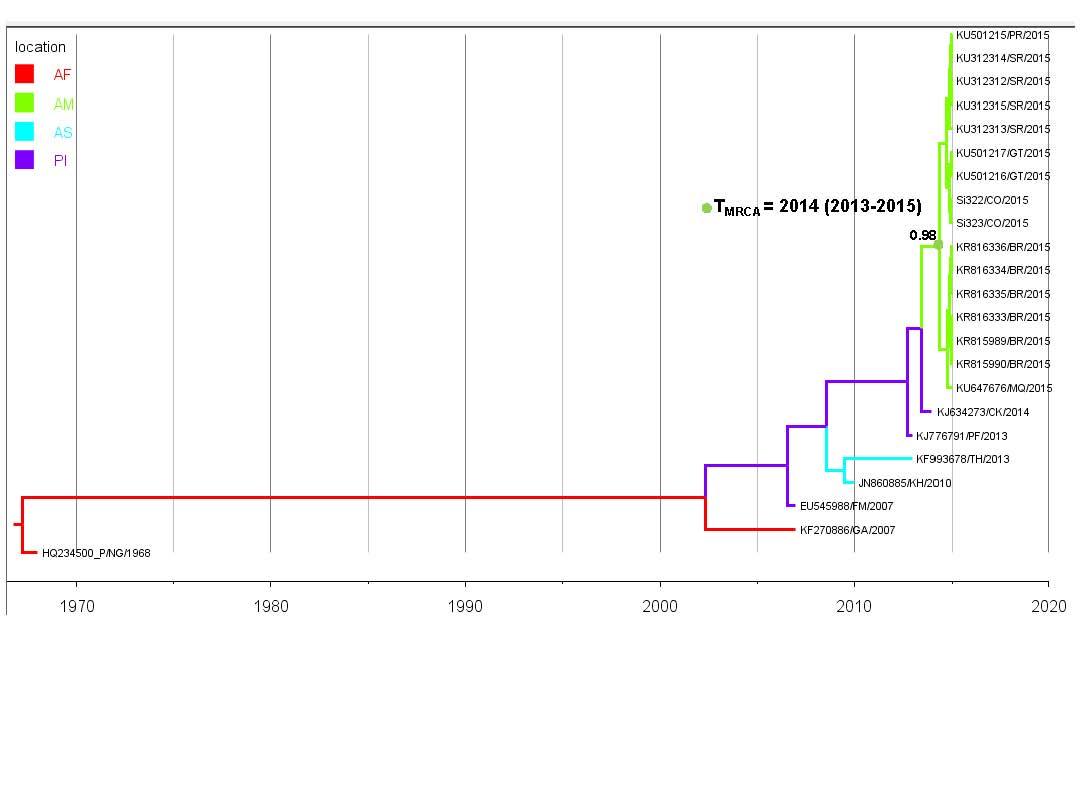Continuing the discussion from First dozen post-Polynesia genomes:
A phylogeographic analysis performed with ZIKV E sequences retrieved from humans living in Africa, Asia, Pacific Islands and the Americas (Brazil, Colombia, Guatemala, Martinique, Puerto Rico and Suriname) supports a single introduction event of ZIKV in the Americas around 2014, consistent with the previous analysis post by Nuno Faria with NS5 gene sequences (see post http://virological.org/t/zika-virus-introduction-in-the-americas-when-and-from-where/204).
All American sequences were grouped in a single location for Beast analyses, but the tree topology suggests that ZIKV may have been introduced by other country than Brazil (like the Caribbean region), but may have remained undetected as ZIKV infections were possibly attributed to other endemic arboviruses with similar clinical presentations. Brazil could be the first country to detect the ZIKV circulation, but not necessary the entrance point of ZIKV in the Americas.
